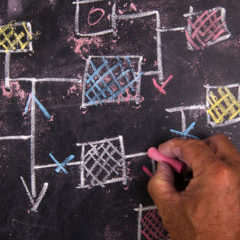It’s easy to fall into a rut when doing the same thing over and over — especially when it comes to the design of a meeting or event you’ve organized for years. When it’s time to hit the “refresh” button, the redesign process can loom like a giant, dark forest.
Stacey Chang, the founder and executive director of the Design Institute for Health (DIH) at the University of Texas at Austin, faces this dilemma regularly. DIH’s mission is to use design thinking to retool multiple aspects of health care — “the one industry that refuses to embrace design,” he told an audience during PCMA Convening Leaders 2017 in Austin. During his session, “How Design Thinking Is Disrupting the Status Quo in Health Care,” Chang offered his own approach to what he sees as the three stages of disruptive design: inspiration, ideation, and experimentation.
Look beneath the surface, and study extremes. For Chang, these are the hallmarks of the inspiration phase, a time of research and mining ideas from other people and disciplines. For instance, Chang recalled that while developing a shoe prototype at his previous employer, IDEO, his team talked to a podiatrist, a woman who never wore shoes, and a foot fetishist. “Design thinking is a creative process for problem solving that puts human needs first,” Chang said — and the human needs and interests at opposite ends of the spectrum can be illuminating for solutions that might succeed in the middle.
Encourage wild ideas. During the ideation phase, “the worst person in the room is the devil’s advocate,” Chang said. It’s important to defer judgment as you and your team brainstorm as many ideas and solutions as possible — because something that seems outlandish at first may be what works in the end.
Fail quickly. Whether you’re designing a pair of shoes, a new medical waiting room, an interface, or even a room set, rough prototypes are going to help you see what works and what doesn’t. It’s best to start this process long before the final product needs to be ready, because when a design or simulation doesn’t work, you learn something valuable about what eventually might work. “It’s about failing in order to learn,” Chang said.
For more of Stacey Chang’s ideas about disruptive design, read a Convening Leaders Preview interview in Convene‘s October issue here.


